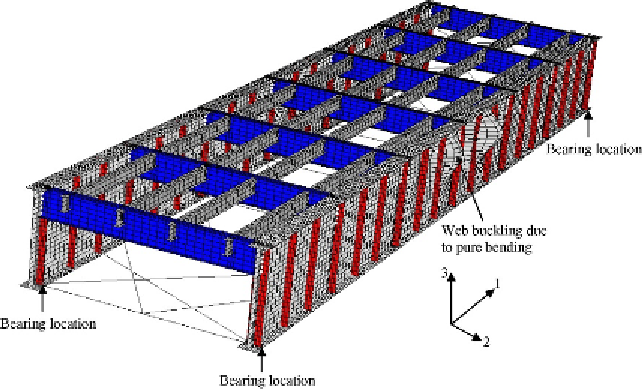Civil Engineering Reference
In-Depth Information
Figure 6.28 Elastic lateral buckling mode (eigenmode 1) for the double-track open-
timber floor plate girder railway steel bridge.
to 1.0, the buckling modes are factored by a magnitude of
L
u
/1000, where
L
u
is the distance between web stiffeners. The factored buckling mode is
inserted into the load-displacement nonlinear analysis of the whole bridge
following the eigenvalue prediction. The developed finite element model
for the whole bridge (see
Figure 6.27
)
was used to perform two analyses as
examples in this topic. In the first analysis, the unfactored live load case
was applied, and the deformed shape after load application, load-displacement
relationship, and stress contours were evaluated using the finite element
model as shown in
Figures 6.29-6.32
. On the other hand, in the second
analysis, the bridge was taken to overall collapse, and the deformed shape
at failure, load-displacement relationship, and stress contours at failure were
evaluated using the finite element model as shown in
Figures 6.33-6.36
.
In
Figure 6.29
,
the deformed shape of the whole bridge after the appli-
cation of the unfactored live load case is shown. It can be seen that the defor-
mations were in the elastic range. The data obtained from ABAQUS [1.29]
have shown that the von Mises stresses at the maximum stressed fibers at the
top and bottom flanges at midspan were well below the yield stresses. In
Figure 6.30
, the stress (principal stresses in direction 1-1) contours after
the live load application are plotted. It can be seen that the yield stresses were

Search WWH ::

Custom Search